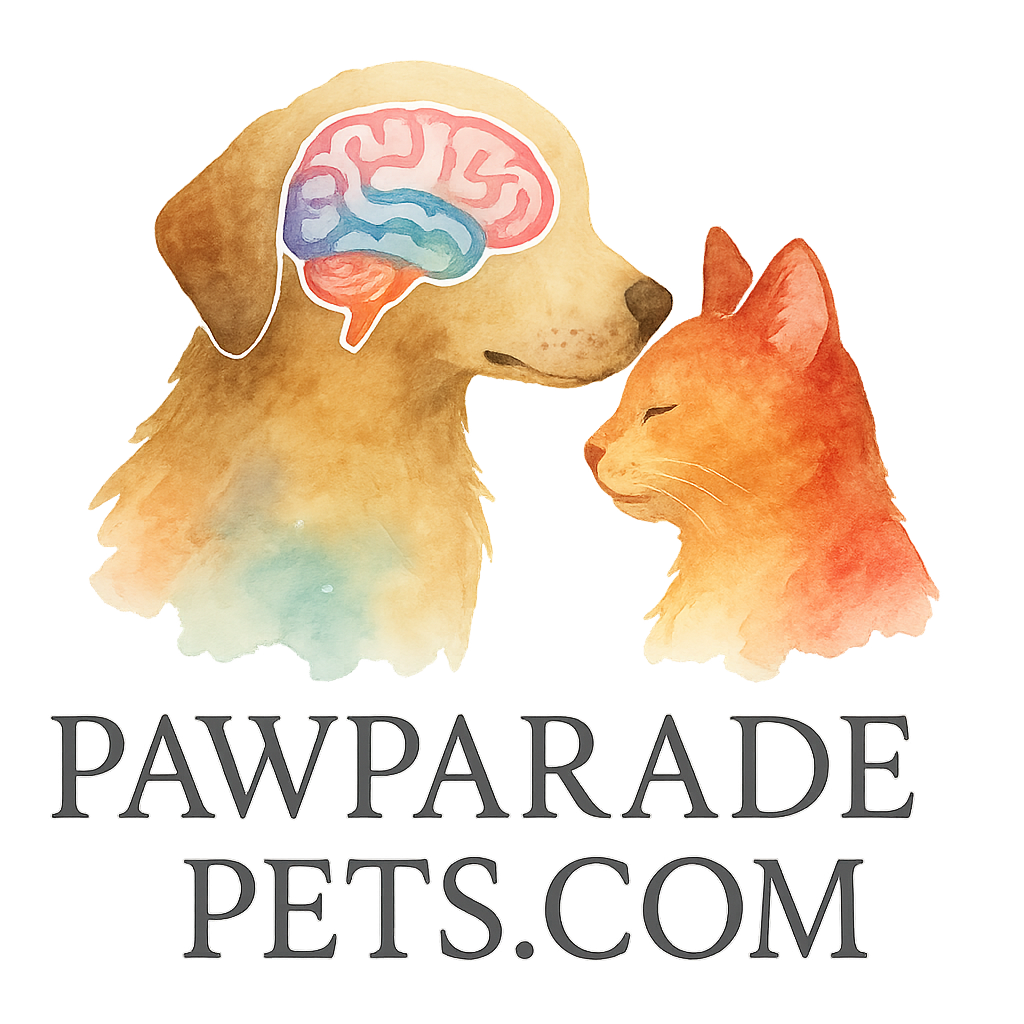Introduction: Why Brain Training Matters for Pets
When most people think about keeping their pets happy, they imagine long walks, outdoor play, and maybe a few squeaky toys. But here’s the thing—your furry friend needs more than just physical exercise. Just like humans, pets thrive when their brains are challenged. Brain training for pets is all about keeping them sharp, curious, and entertained—even when you’re stuck indoors.
If you’ve ever noticed your dog or cat getting into mischief out of boredom, brain training might be the perfect solution. And the best part? You don’t need fancy equipment or hours of free time to get started.
Understanding Pet Brain Training
What is Brain Training for Pets?
Brain training is a mix of mental puzzles, interactive play, and obedience exercises designed to challenge your pet’s mind. It goes beyond teaching “sit” or “stay”—it’s about creating games that test memory, problem-solving, and focus.
Benefits of Mental Stimulation
A mentally stimulated pet is a happy pet. Brain training can:
- Reduce destructive behaviors caused by boredom.
- Improve obedience and responsiveness.
- Strengthen your bond with your furry companion.
- Delay cognitive decline in older pets.
For more benefits and deep-dive insights, check out the full guide on brain training basics.
Indoor vs. Outdoor Training Activities
Outdoor activities are fantastic, but weather and busy schedules often get in the way. Indoor brain training is practical because it works regardless of the season, requires less space, and makes use of everyday household items.
Preparing for Indoor Brain Training
Tools and Toys You’ll Need
Before you jump into games, gather some essentials:
- Puzzle feeders and treat-dispensing toys.
- Soft balls, plush toys, and safe chew toys.
- Cups, boxes, or containers for hiding treats.
For a detailed list of recommended toys, visit tools & toys for brain training.
Setting the Right Environment
Choose a quiet space with minimal distractions. Clear away clutter and create a safe zone where your pet can move around freely without bumping into fragile items.
7 Brain Training Games for Pets Indoors
1. Hide-and-Seek with Treats
How to Play Hide-and-Seek with Pets
Start by letting your pet watch you place a treat under a cup, behind a pillow, or under a small box. Encourage them to “find it.” As they improve, increase the difficulty by hiding treats in trickier spots.
Benefits of This Game
- Enhances problem-solving skills.
- Engages their natural foraging instincts.
- Provides mental stimulation while keeping it fun.
Explore more hide-and-seek style games and activities.
2. Puzzle Toys and Food Dispensers
Why Puzzle Toys Work
Puzzle toys turn mealtime into a mental workout. Your pet has to figure out how to move levers, spin wheels, or nudge compartments open to get the food.
Best Puzzle Toys to Try
- Kong toys stuffed with peanut butter.
- Food-dispensing balls.
- Interactive puzzle boards.
See top picks at interactive games & toys.
3. Interactive Obedience Training
Fun Indoor Obedience Challenges
Mix training commands with games. For example, practice “sit” and “stay” by hiding a toy and only allowing them to retrieve it after following your command.
Commands That Double as Brain Games
Try commands like “fetch the red ball” or “bring me the teddy.” These not only reinforce obedience but also boost recognition and memory.
Learn more about behavior and obedience.
4. Shell Game (Cup Game)
Step-by-Step Guide
- Place a treat under one of three cups.
- Shuffle the cups slowly while your pet watches.
- Encourage them to sniff or paw at the cup they believe hides the treat.
What Skills Pets Develop
- Improves focus and memory.
- Builds problem-solving confidence.
- Strengthens observation skills.

5. Indoor Obstacle Course
Simple Household Setup
Use chairs, cushions, and tunnels made of blankets draped over furniture. Create jumps with broomsticks balanced on boxes.
Benefits Beyond Brain Stimulation
Not only does this challenge their mind, but it also gives them physical exercise—perfect for high-energy pets stuck indoors.
6. Name Recognition Games
Teaching Pets to Identify Toys
Start with two toys. Say the name of one toy (“ball”) and encourage them to fetch it. Reward correct responses with treats and praise.
Expanding Their Vocabulary
As they get better, add more toys. Eventually, your pet may recognize five, ten, or even twenty toy names!
For advanced challenges, try cognitive challenges for pets.
7. Scent Work Indoors
Beginner Scent Games
Hide a treat in a small box and let your pet sniff it out. Slowly increase difficulty by using multiple boxes.
Advanced Indoor Scent Training
Use different scents like essential oils on toys and train them to recognize each scent by name.
Scent games are an incredible way to encourage problem-solving skills.
Additional Indoor Activities for Smart Pets
Rotating Toys for Fresh Engagement
Switch out toys every week to prevent boredom. A toy that’s “new” again keeps excitement levels high.
Cognitive Challenges for Advanced Pets
Introduce memory-based games or multi-step tasks, like fetching two different toys in sequence. Dive deeper into cognitive pet challenges.
Common Mistakes to Avoid in Brain Training
Overcomplicating Games
If your pet gets frustrated, they’ll lose interest. Start simple, then increase difficulty as they succeed.
Ignoring Your Pet’s Pace
Every pet learns differently. Don’t compare progress—celebrate small wins.
Tips for Success in Indoor Brain Training
Keep Sessions Short and Fun
Aim for 10–15 minutes per session. Quality matters more than quantity.
Reward Consistently
Always use positive reinforcement—treats, praise, or belly rubs.
Track Your Pet’s Progress
Keep a simple log of which games your pet enjoys most and how quickly they improve.
Conclusion
Brain training for pets isn’t just a trend—it’s a lifestyle shift that makes indoor time more enriching, fun, and rewarding for both you and your furry friend. With games like hide-and-seek, puzzle toys, obedience challenges, and scent work, you can turn a rainy day into a stimulating adventure.
Remember, the key is consistency, patience, and making learning enjoyable. Ready to challenge your pet’s mind? Start with one of these games today and watch the transformation unfold!
FAQs
1. How often should I do brain training for my pet?
Aim for short sessions 3–5 times per week to keep it engaging without overwhelming your pet.
2. Can brain training replace physical exercise?
No, but it complements it. Mental stimulation plus physical activity equals a balanced pet lifestyle.
3. Are these games suitable for cats as well as dogs?
Yes! While some games are easier with dogs, cats can also benefit from scent work, puzzles, and hide-and-seek.
4. What if my pet loses interest quickly?
Switch games, shorten sessions, or use higher-value treats to keep motivation high.
5. Is brain training good for senior pets?
Absolutely. It can slow cognitive decline and keep older pets sharp.
6. Do I need to buy expensive toys?
Not at all. Many games can be played with household items like cups, blankets, and cardboard boxes.
7. Where can I find more brain training resources?
Check out Paw Parade Pets for more guides, tools, and inspiration.


